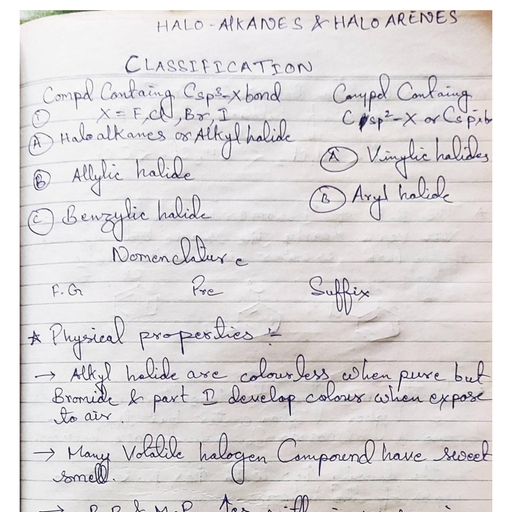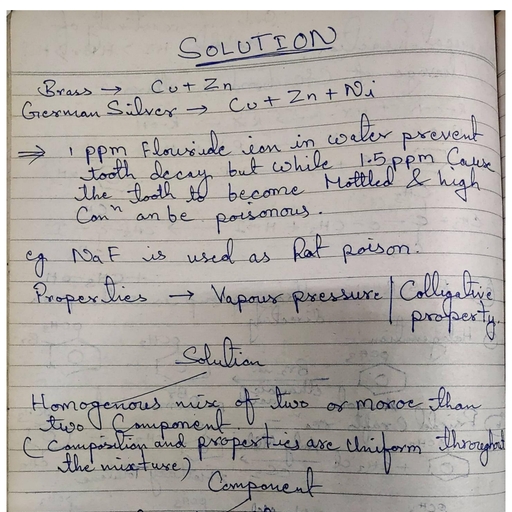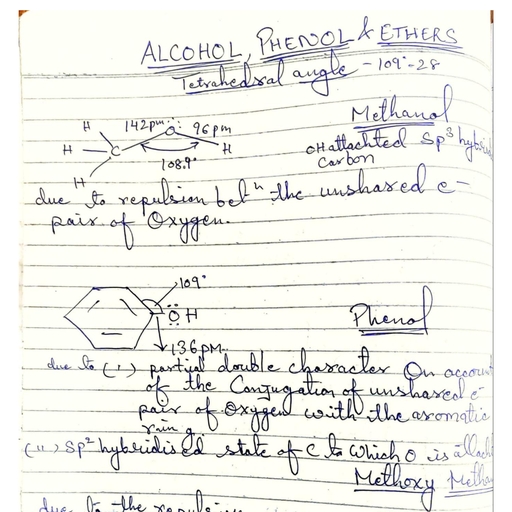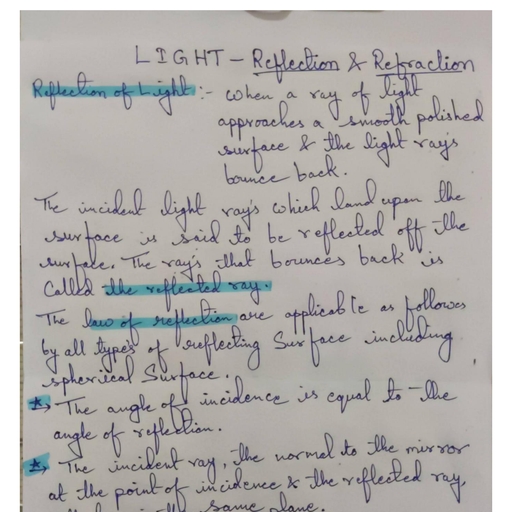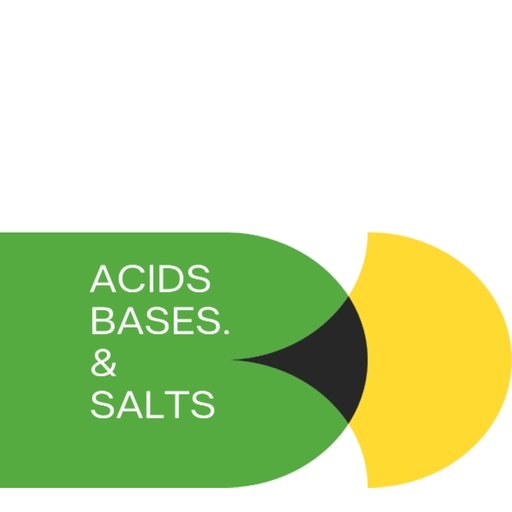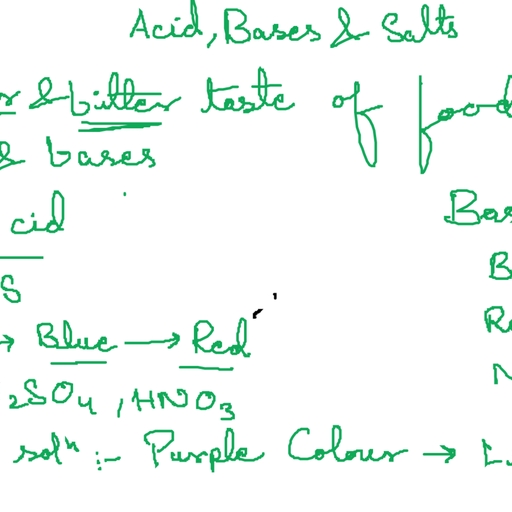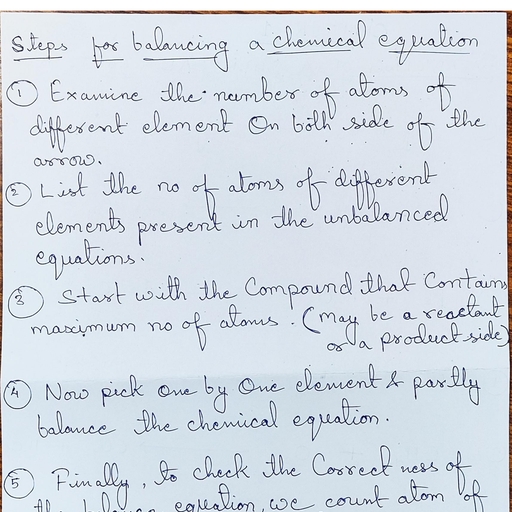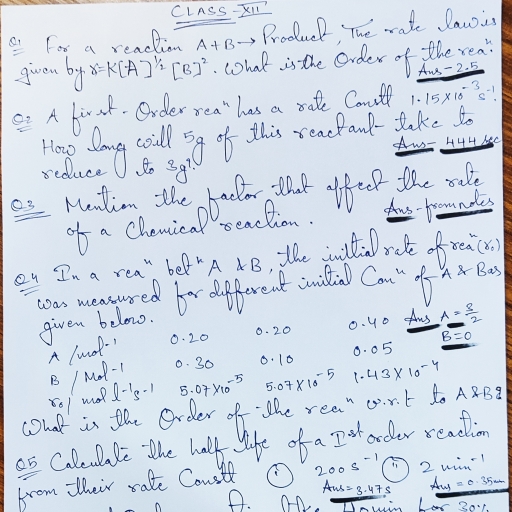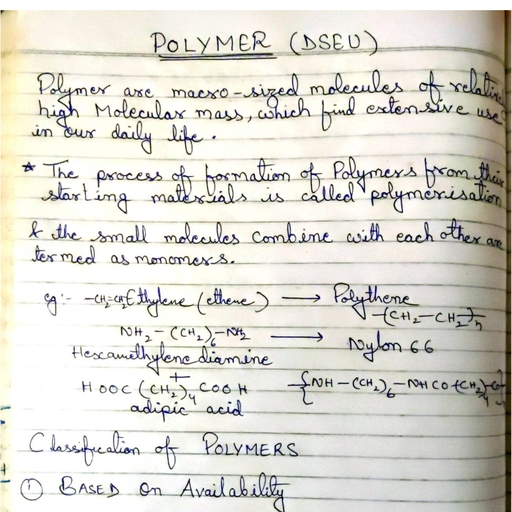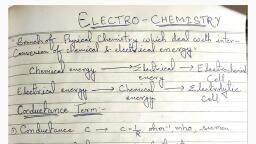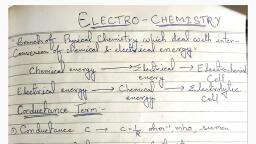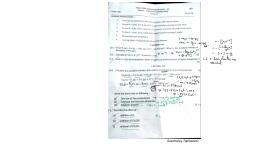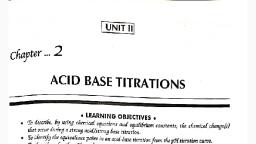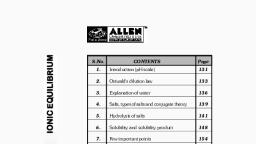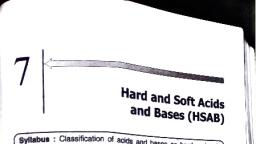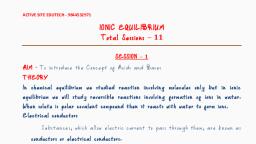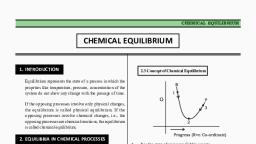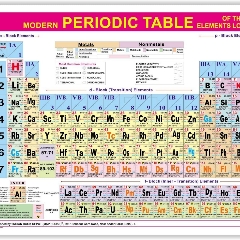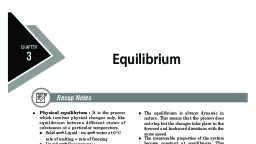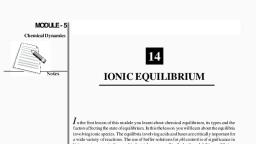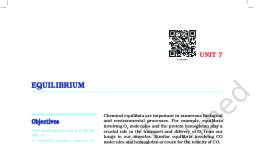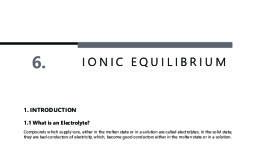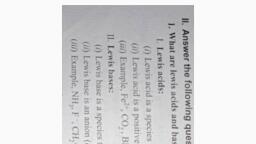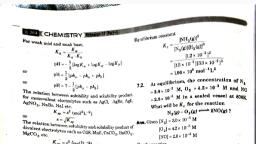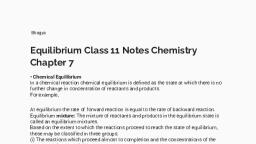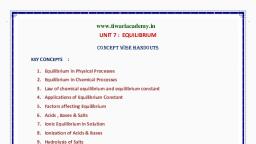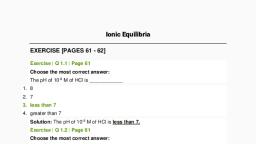Page 1 :
7. Equilibrium, Equilibrium in physical processes:, • Solid-liquid equilibrium, For any pure substance at atmospheric pressure, the temperature at which the, solid and liquid phases are at equilibrium is called the normal melting point or, normal freezing point of the substance., • Liquid-vapour equilibrium, • Solid-vapour equilibrium, Equilibrium in chemical processes-Dynamic equilibrium:, Product, nation, Reactant, Equilibrium, Time, Fig: Attainment of chemical equilibrium, Law of chemical equilibrium and equilibrium constant:, A + B C + D, Equilibrium equation:, C D, K. =, А В, Where, K. = Equilibrium constant, %3D, Relations between equilibrium constants for a general reaction and its multiples:, aA + bB, ke, cC + dD ; K, aA + bB ; K'= (1/K), naA + nbB = ncC + ndD ; K' = K.", cC + dD, %3D, Scanned by TapScanner, Concentration
Page 2 :
Homogeneous equilibria:, All the reactants and products are in the same phase., • Equilibrium constants in gaseous systems:, aA + bB = cC + dD, Pc PD, . =, K,, pA PB, Δη, Or, K, = K. RT, %3D, Heterogeneous equilibria:, Having more than one phase:, Ni, +4CO,=Ni CO ,,, 4 8, Ni Co ,], K. =, [coj, nation, %3D, [As the molar concentration of a pure solid or liquid is constant, therefore, [NI] is, constant], Kc Jang, Applications of equilibrium constants:, 103, 10, • Predicting the extent of a reaction, > If K, > 10', then products predominate over reactants., > If K, < 10-', then reactants predominate over products., If K, is in the range of 10- to 10', then appreciable concentrations of, both reactants and products are present at equilibrium., • Predicting the direction of the reaction,, aA + bB = cC + dD, Reaction quotient, Q., %3D, A B", (The concentrations in Q, are not necessarily equilibrium values), Scanned by TapScanner
Page 3 :
If Q. > K., then the reaction will proceed in the reverse direction., If Q. < K, then the reaction will proceed in the forward direction., If Q. = K, then the reaction mixture is already at equilibrium., Relation between K, Q, and G (Gibbs energy):, AG = AG® + RT InQ, At equilibrium, AG = 0, and Q= K, Therefore, AGO= -RT InK, Or, InK = -AG©/RT, Or, K = 1-AG*/RT, • If AG® <0, then -AG/RT is positive and e-AG* /RT, "> 1, therefore, K> 1., That is a spontaneous reaction., • If AG® > 0, then -AG/RT is negative and e IRT < 1, therefore, K< 1. That, mation, is a non-spontaneous reaction., Factors affecting equilibria:, Le Chatelier's principle states that a change in any of the factors that determine the, equilibrium conditions of a system will cause the system to change in such a manner so, as to reduce or to counteract the effect of the change., Concentration change, > When a reactant/product is added, the net reaction proceeds in the, direction in which the added substance is consumed., > When a reactant/product is removed, the net reaction proceeds in the, direction in which the removed substance is replenished., Pressure change, When pressure is increased, the equilibrium shifts in the direction in which the, number of moles of gas or pressure decreases., Addition of inert gas, At constant volume, addition of inert gas does not affect the equilibrium of a, reaction., Scanned by TapScanner
Page 4 :
• Temperature change, > The equilibrium constant for an exothermic reaction decreases with, increase in temperature., > The equilibrium constant for an endothermic reaction increases with, increase in temperature., Effect of catalyst, Catalyst does not affect the equilibrium of a reaction., Acids, Bases, and Salts, • Arrhenius, concept of acids and bases:, Acids are substances which dissociate in water to give H* ions., Bases are substances which dissociate in water to give OH¯ ions., • Bronsted-Lowry acids and bases:, Acids are substances that can donate H* ions., Bases are substances that can accept H" ions., + H,O,, base 9cak conjugate, HCI, ag, H,O*, + CI, acid, conjugate, Geak, Est), ation, acid, base, The conjugate base of a strong acid is a weak base and vice-versa., Lewis acids and bases:, > Acids are species that accept electron pair., > Bases are species that donate electron pair., Ionization of acids and bases:, Hg o* + oH, Ionization constant and ionic product of water:, [H,0*][OH"], Ionization constant of water, K =, H,0, Ionic product of water, K, =[H* ][OH¯], At 298K, K = 1 × 10-1* M², For acidic solution, [H;O*]> [OH], For neutral solution, [H;O*]= [OH"], For basic solution, [H,O*]< [OH], Scanned by TapScanner
Page 5 :
The pH scale, y pH = -log [H*), → pKw = pH + pOH = 14, For acidic solution, pH < 7, For basic solution, pH > 7, For neutral solution, pH = 7, Ionization constant for weak acids:, ca?, K,, 1-a, pK, = - log K,, Ionization constants for weak bases:, ca?, 1-a, Relation between K, and Kg, K, X K,, pK, × pK = pKw = 14, pation, Factors affecting acid strength (the strength of H-A bonds is an important factor, in determining the strength of acids):, HF << HCL < HBr << HI, Size of A increases, Acid strength increases, CH, < NH, < H,0 < HF, Electronegativity of A increases, Acid strength increases, Buffer solutions:, Buffer solutions are the solutions in which pH does not change on dilution or with the, addition of small amounts of acid or alkali., Solubility equilibria of sparingly soluble salts:, Scanned by TapScanner

